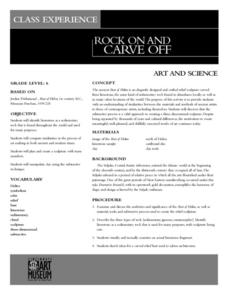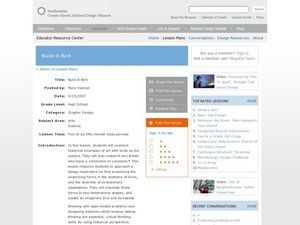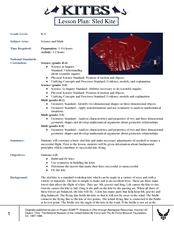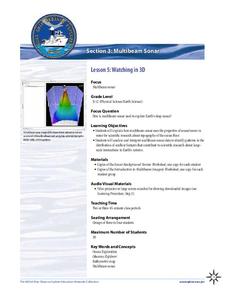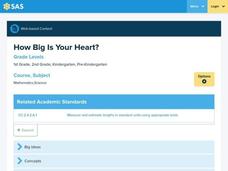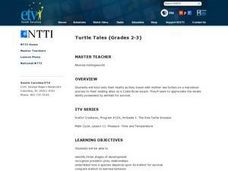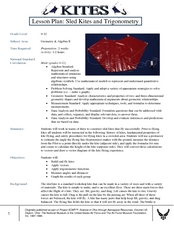American Institute of Physics
African American Inventors in History
A two-part lesson plan introduces young historians to the work of famous African American inventors. Groups first research and develop a presentation of an inventor that includes biographical information and information about one of...
University of Colorado
Patterns and Fingerprints
Human fingerprint patterns are the result of layers of skin growing at different paces, thus causing the layers to pull on each other forming ridges. Here, groups of learners see how patterns and fingerprints assist scientists in a...
Curated OER
Rock On And Carve Off
Sixth graders work in groups of four to create one subtractive relief bust out of clay. Team results are shared and discussed to analyze the degree of planning and skillful manipulation of materials necessary to complete a limestone bust.
Curated OER
Principles of Flight: Flying Paper Airplanes
Students investigate ways to enhance an object's flying ability. In this model construction instructional activity, students construct two paper airplanes, one of which is twice as big as the first. Students compare and...
Curated OER
Planet/Constellation Mobile
Young scholars construct three-dimensional solar system mobiles.
Curated OER
Build-A-Bird
High schoolers create an imaginary bird. In this anatomy lesson, students analyze how artists represent birds historically, then determine the anatomical aspects that suit a bird to its habitat. Using this information, high schoolers...
Curated OER
Classification in Action
Students work with a set of objects to set up both quantitative and qualitative classification systems. As a group, students follow an example to design and complete two classification systems using a set of objects provided. ...
Curated OER
Sled Kite
Students make and fly a sled kite out of plastic garbage bags, dowel rods, and more. In this kite lesson plan, students plan the kite to have symmetry and make adjustments as they test it.
Curated OER
Classification
Young scholars explore the observable properties of matter and utilize them in classification. They use a binary classification system to divide objects, then justify their scheme.
NOAA
Watching in 3D
Bring the ocean floor to life! Earth science scholars discover the process of deep sea mapping in the third installment in a series of five lessons about ocean exploration. The teacher's guide includes helpful resources, worksheets, and...
Curated OER
How Big Is Your Heart?
Students complete a performance about the heart. In this heart lesson plan, students learn about the heart functions and then perform them.
Curated OER
Identifying Creatures
Students use a classification key from a provided worksheet to identify creatures. This task assesses student's abilities to interpret data, make decisions, identify, and classify.
Curated OER
Turtle Tales
Students watch videos and fill out worksheets about the turtles and their journey to the Costa Rican beach. In this turtles lesson plan, students learn and discuss survival, predator and prey, and stages of development.
Curated OER
Minerals
Young scholars explore the concept of minerals. In this minerals lesson, students discuss how cooling affects the size of crystals. Young scholars discuss how the structure of minerals is a tetrahedron. Students discuss the structure of...
Curated OER
Sled Kites and Trigonometry
Students study the history of kites and their fundamental properties. In this kites lesson students divide into teams and build and fly kites.


